The Linux desktop can be a confounding thing—always just on the cusp of perfection, but seemingly lacking one small detail or another. Granted, nearly every Linux desktop can be brought to that level of greatness with a configuration or two, but every so often you just wish you could install and be done with it.
-
You won’t have to bother with codecs
-
You won’t have to hunt down third-party software
-
You won’t have to tweak the UI to fit your needs
-
You could easily play games
-
Media “just worked”
Most of us can take a standard distribution and get the above working with little to no effort. But other users may want a computer operating system that doesn’t require extra work.
That is where Chapeau comes in. Chapeau is a cutting-edge Linux distribution, built from Fedora Workstation, using the GNOME desktop environment, and intended to be an incredibly intuitive and easy to use, out-of-the box experience.
Trust me when I say Chapeau is exactly that.
Part of the Chapeau marketing states that it is “Fedora without the work.” I could not have said it better. With Chapeau, you get a desktop distribution in which everything works—in every way—out of the box.
What Chapeau includes
Do you remember the old days of Linux, when the “start” menu would include a massive list of applications (most of which you would never use)? Chapeau manages to included software packages that combine to make an incredibly impressive array of applications that doesn’t go the old school Linux route of “something for everyone.” Instead, Chapeau has refined the package list to contain everything a modern user would need to not only work, but play. The list includes:
-
Kernel 4.7.4
-
GNOME 2.20
-
LibreOffice 5
-
PlayOnLinux
-
Wine
-
Steam
-
VLC
-
Mozilla (with included Adobe Flash)
-
Hardware Helper Tool
-
RPMFusion
-
All necessary codecs (free and non-free) for media and DVD playback
-
Rhythmbox
-
GNOME Music
-
Sound Recorder
-
Sound Converter
-
Sound Juicer
-
Openshot video editor
-
GNOME Documents/Calendar/Weather/Books/Maps/Dictionary/Photos
-
Shotwell
-
Darktable
-
GIMP
The goodness doesn’t end with the included packages. Chapeau also includes a few UI enhancements (many of which should be considered in the main release of GNOME). One such enhancement is tighter default font scaling. The developer of Chapeau (Vince Pooley—yes, this project is maintained by one man) has installed GNOME Tweak and turns the scaling factor down to .80. For some (like myself), this font scaling does a great job of keeping the UI both clean and readable. Fortunately, if you prefer to increase the font scale back to the GNOME 1.0 default, you can simply open up Tweaks and bump the font scaling back up to 1.0 (Figure 1).
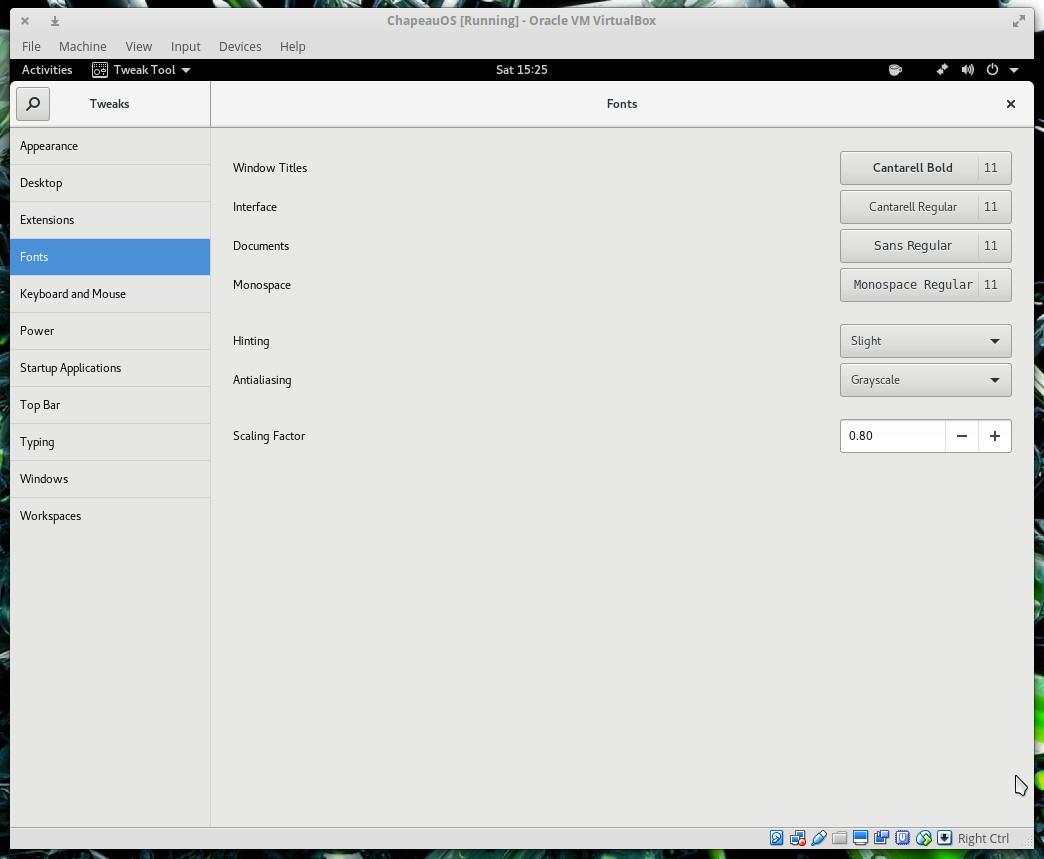
Activities Folders
One very nice, but subtle, addition Pooley made to GNOME is the inclusion of a few extra app folders within the Dashboard. Instead of the default Utilities and Sundry folders, Chapeau includes folders for Wine, Games, and Office (Figure 2).
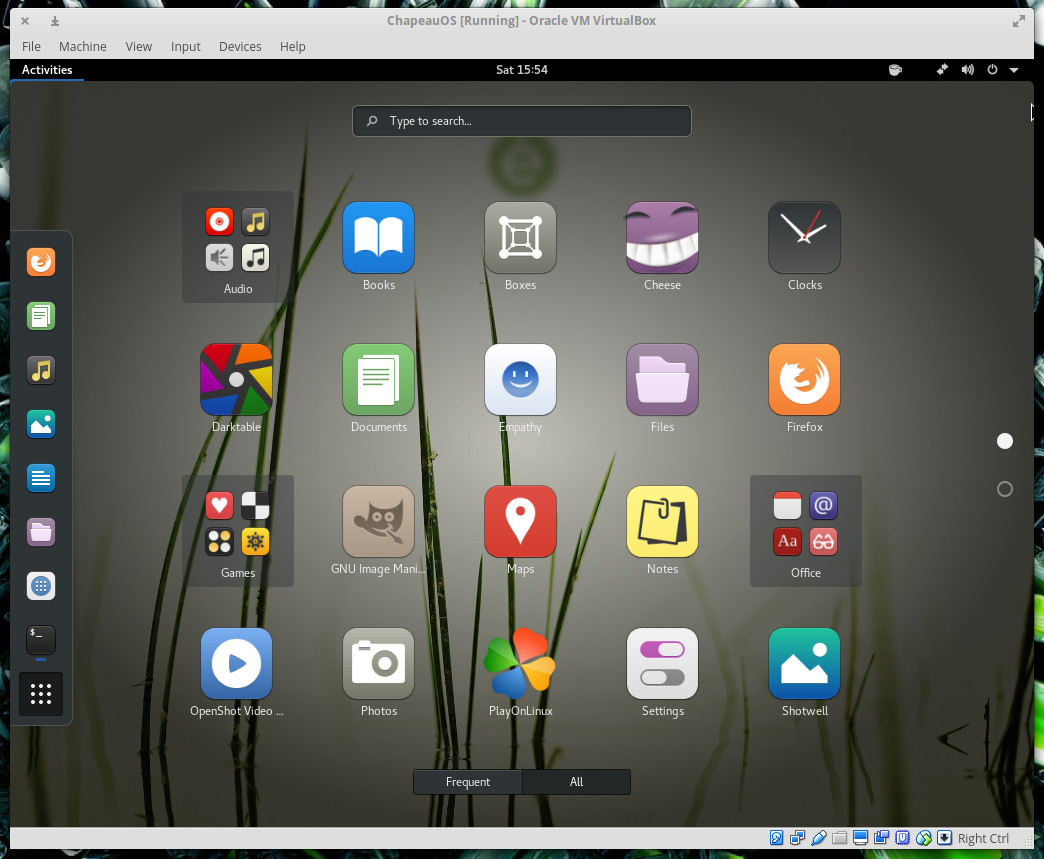
As you can see, I added an extra category for Audio. Adding folders to the GNOME Dashboard isn’t quite as simple as dragging one launcher onto another (as it is in Android). Instead you have to open up the dconf-editor (which Chapeau includes), navigate to org > gnome > desktop > app-folders, double-click on folder-children, add your new folder to the Custom value line, and click Apply (Figure 3).
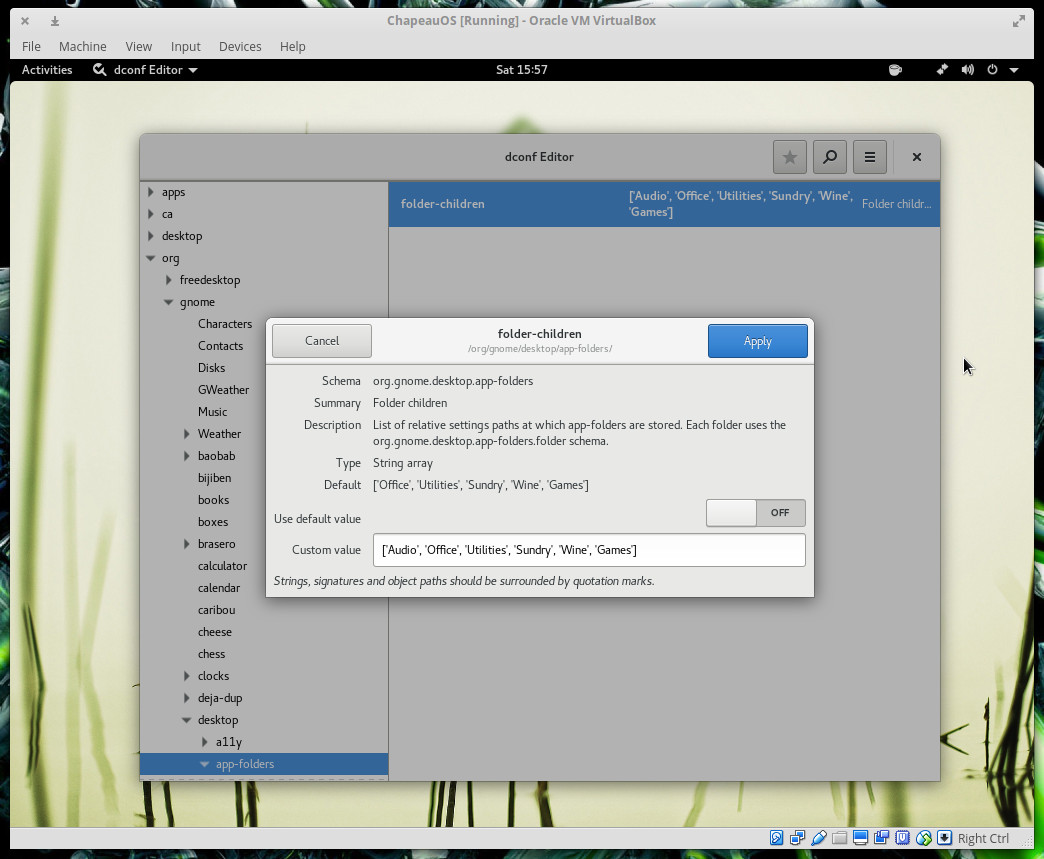
If you find the folder doesn’t show up, you might have to issue the following commands first (I’ll demonstrate by creating the Audio folder):
-
gsettings set org.gnome.desktop.app-folders.folder:/org/gnome/desktop/app-folders/folders/Audio/ name ‘Audio’
-
gsettings set org.gnome.desktop.app-folders.folder:/org/gnome/desktop/app-folders/folders/Audio/ translate true
-
gsettings set org.gnome.desktop.app-folders.folder:/org/gnome/desktop/app-folders/folders/Audio/ categories “[‘Audio’]”
Now if you go back to dconf-editor and add the folder for Audio, it will appear in the Dashboard…populated with apps in the Audio category.
The one trick I would like to see the Chapeau developer pull off would be creating the ability to “drag and drop” one launcher onto another to create app folders. Why this isn’t the default behavior in GNOME, I cannot figure out.
Games, games, games
When you ask most why Linux has failed to make much headway in the land of the desktop, the immediate answer is almost always “Games!”. Even though the typical computer user is not a gamer, it seems gaming is the thing that holds Linux back from taking the desktop by storm.
Chapeau goes a long way to rectify that problem. By including PlayOnLinux, Wine, and Steam (as well as a few native games such as Chess, Mines, Reversi, Neverball & Neverputt), Chapeau has made it easy for users to run their favorite games on Linux. Between PlayOnLinux (Figure 4) and Steam, you can install and run just about any game you like.
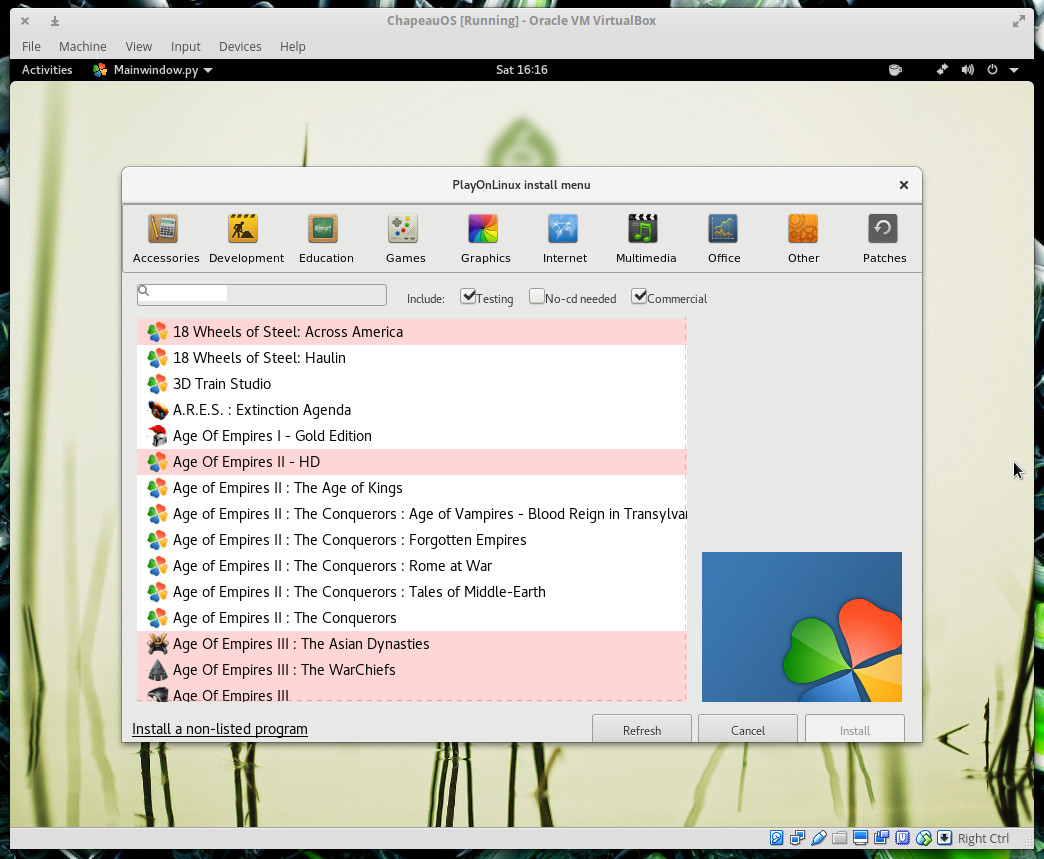
If PlayOnLinux doesn’t do it for you, Steam is sure to make the prospect of playing games on Linux a treat. Open up the Steam app (allow it to update on first launch), log into your Steam account (or create a new account), and start searching for games to play (Figure 5).
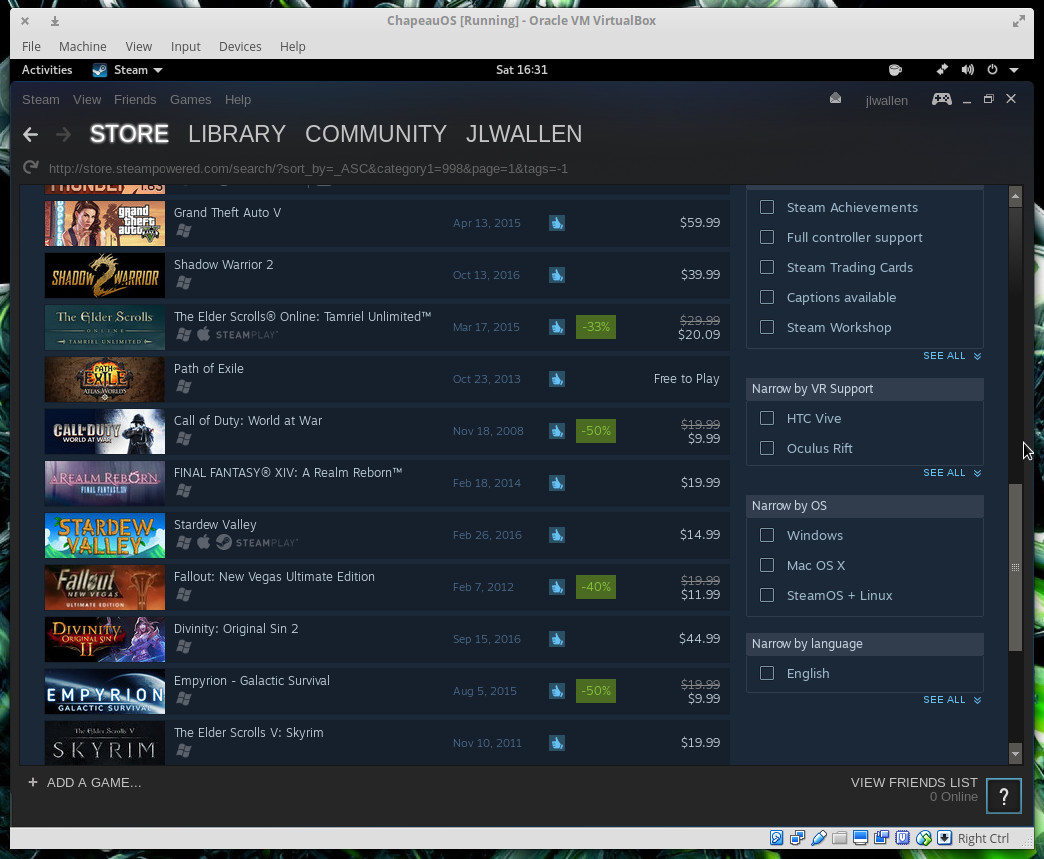
Chapeau gets it right
I’ve used so many Linux distributions over the years. They seem to come and go like fashion trends. Yes, the stalwarts like Ubuntu, Fedora, Debian, SUSE, and Linux Mint will remain, but the fringe distributions don’t always enjoy such staying power.
Chapeau, however, doesn’t feel like a fringe distribution. In fact, Chapeau does everything right. Not only does it include something for every modern user, it works…and works well. In the end, that truly is the mark of a good distribution, how well it succeeds in doing what it sets out to accomplish. Of all the distributions I’ve used, Chapeau gets more right than any other. Whether you’re a casual browser, a master of productivity, or a gamer…Chapeau has you covered.
Develop a good working knowledge of Linux using both the graphical interface and command line with this free Introduction to Linux course from The Linux Foundation.





